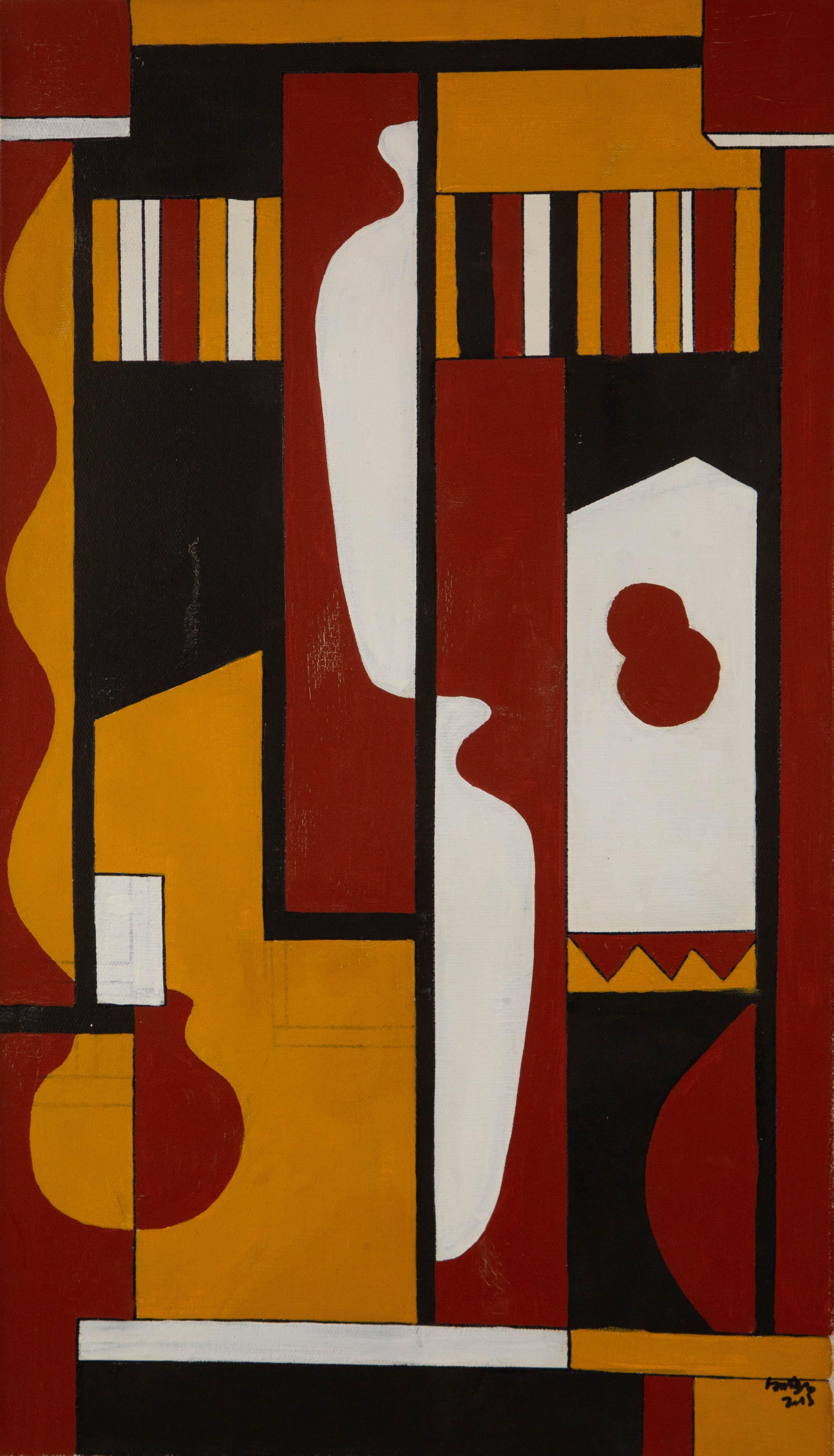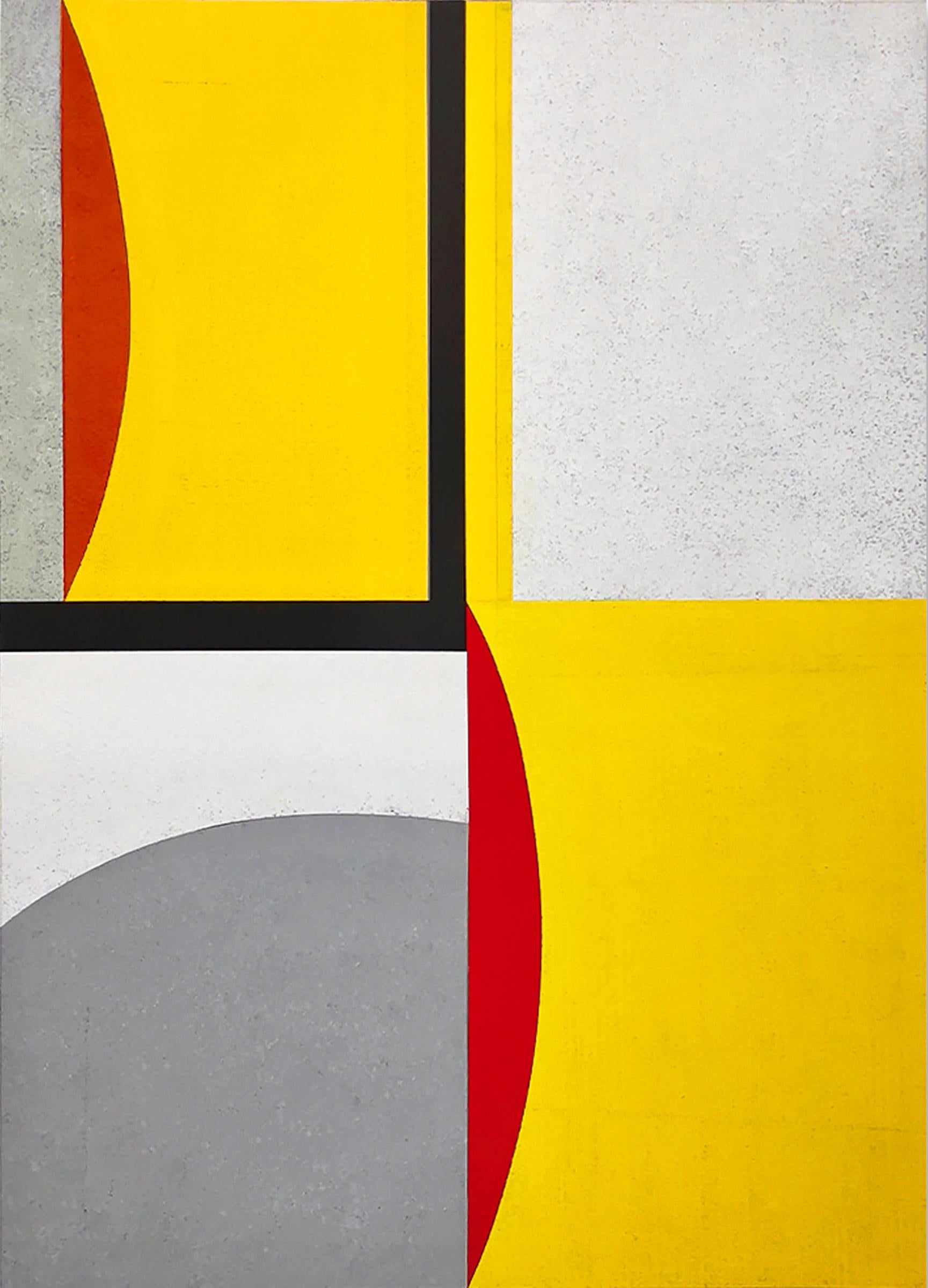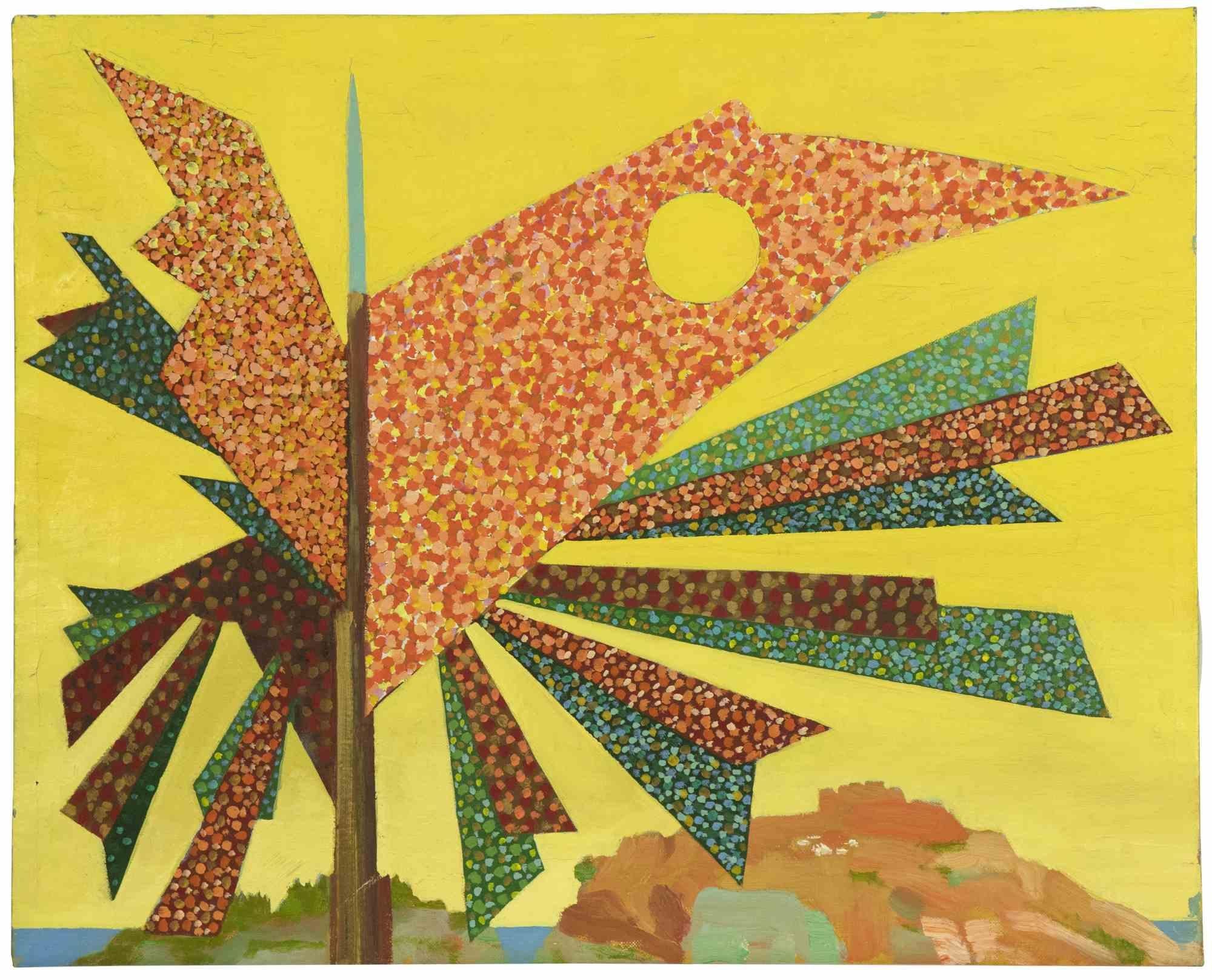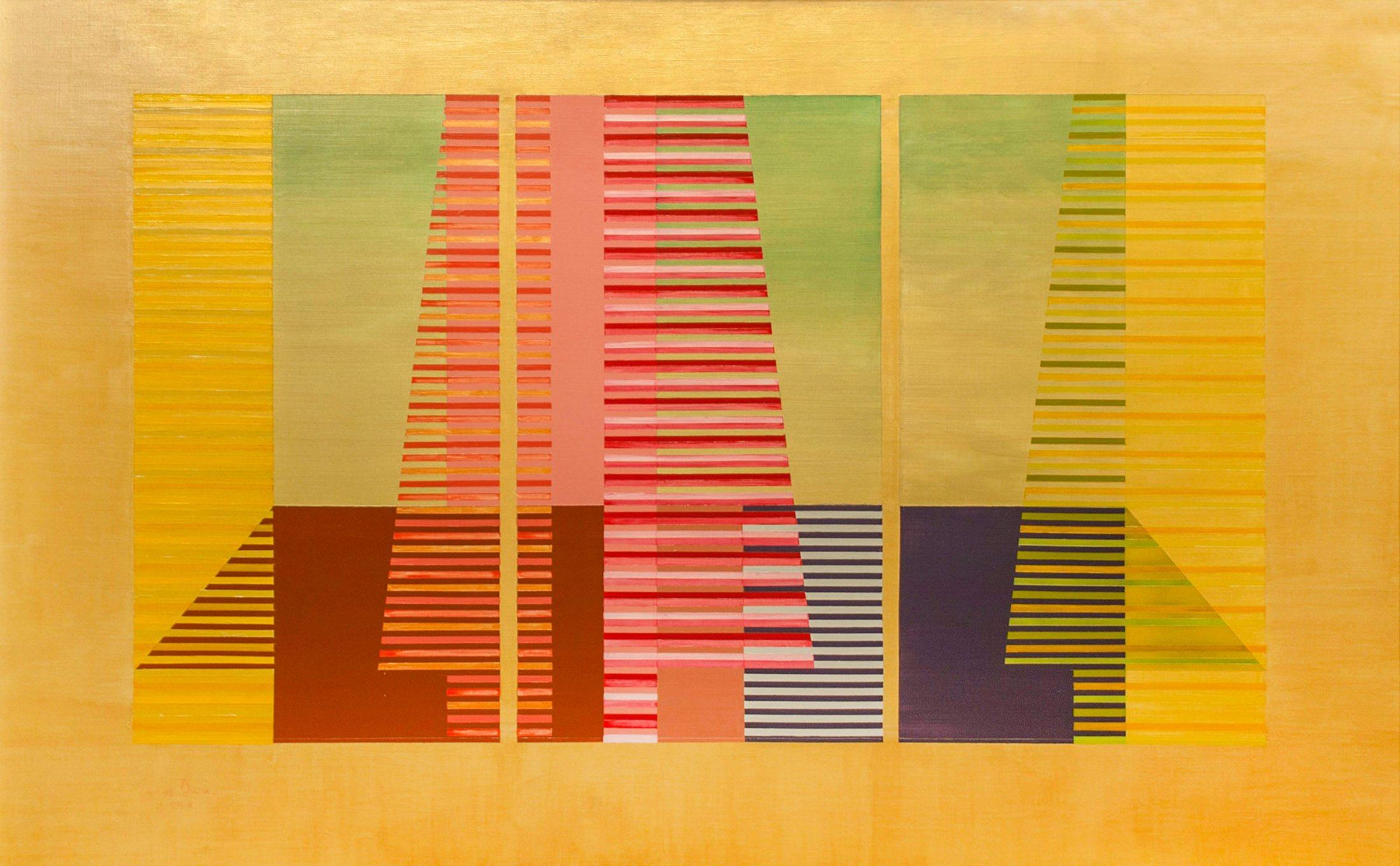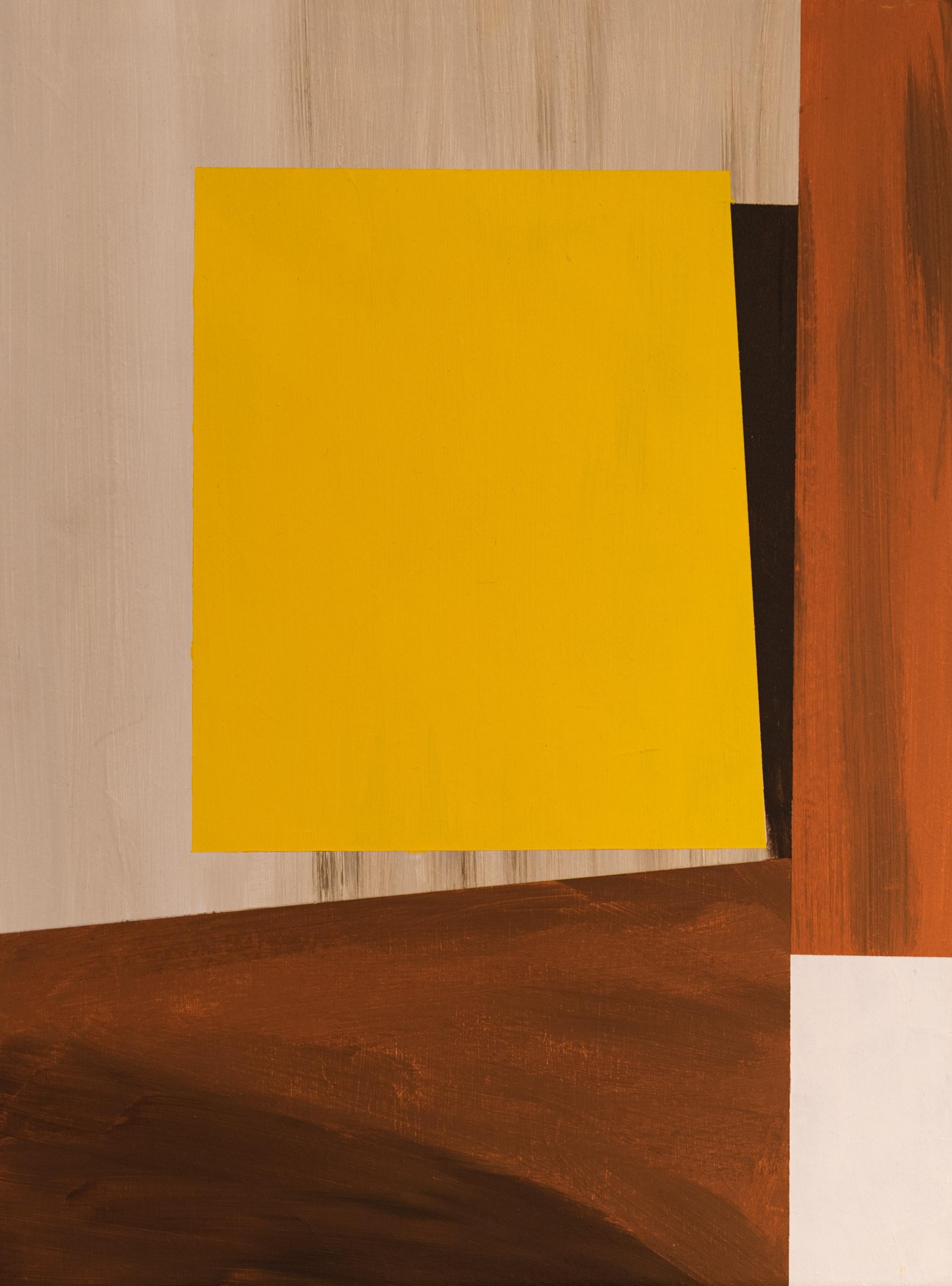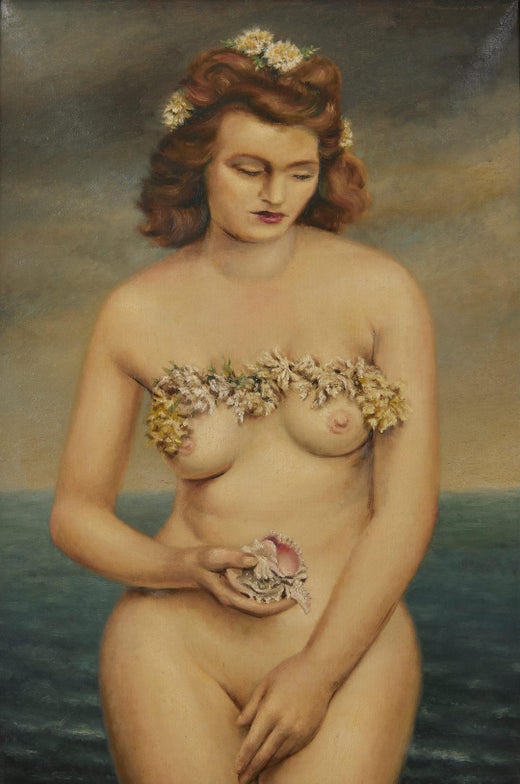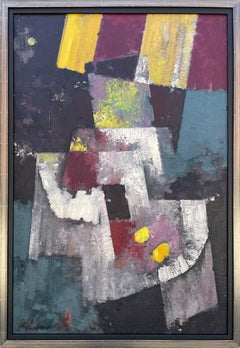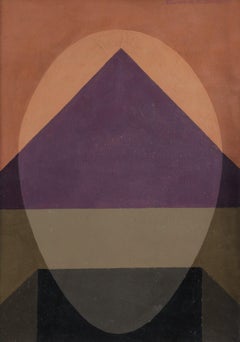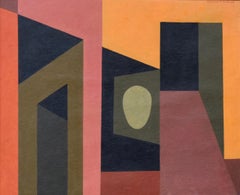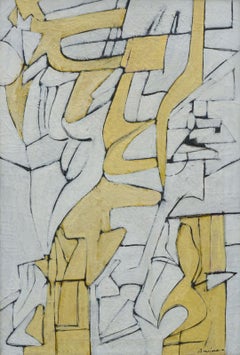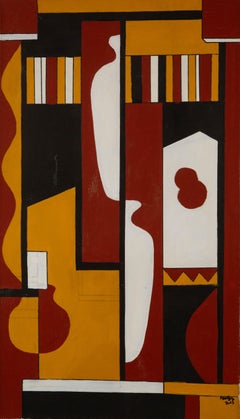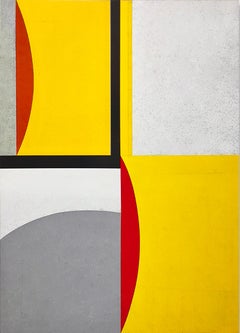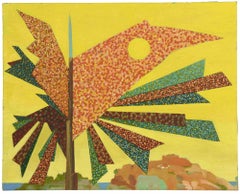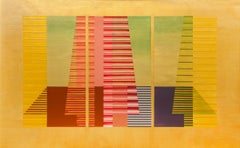Items Similar to In and Out, mid-century figural abstract vibrant yellow geometric painting
Want more images or videos?
Request additional images or videos from the seller
1 of 8
Clarence Holbrook CarterIn and Out, mid-century figural abstract vibrant yellow geometric painting1963
1963
$14,500
£10,949.82
€12,536.54
CA$20,477.79
A$22,356.85
CHF 11,720.78
MX$271,532.49
NOK 146,373.45
SEK 138,215.57
DKK 93,571.89
About the Item
Clarence Holbrook Carter (American, 1904-2000)
In and Out, 1963
Acrylic on paper
Signed and dated lower right
22 x 30 inches
Figural abstract vibrant yellow geometric painting.
Clarence Holbrook Carter achieved a level of national artistic success that was nearly unprecedented among Cleveland School artists of his day, with representation by major New York dealers, scores of awards and solo exhibits, and streams of praise flowing from pens of the top art critics. Over the course of his 60+ year career Carter evolved from an exceptionally fine American Scene painter capable of evoking deep reservoirs of mood, into an abstractionist with a strongly surrealist bent.
- Creator:Clarence Holbrook Carter (1904-2000, American)
- Creation Year:1963
- Dimensions:Height: 22 in (55.88 cm)Width: 30 in (76.2 cm)
- Medium:
- Movement & Style:
- Period:
- Condition:
- Gallery Location:Beachwood, OH
- Reference Number:1stDibs: LU176829679362
Clarence Holbrook Carter
Clarence Holbrook Carter achieved a level of national artistic success that was nearly unprecedented among Cleveland School artists of his day, with representation by major New York dealers, scores of awards and solo exhibits, and streams of praise flowing from pens of the top art critics. Over the course of his 60+ year career Carter evolved from an exceptionally fine American Scene painter capable of evoking deep reservoirs of mood, into an abstractionist with a strongly surrealist bent. While his two bodies of work seem at first to be worlds apart, owing to their different formal vocabularies, they, in fact, explore virtually the same subject: the nexus between life and death and the transition from earth to spirit. The early work finds its expressive power through specific people, events, and landscapes—most of which are drawn from his experiences growing up in the river town of Portsmouth, Ohio—while the later work from the 1960s on evokes potent states of being through pure flat shape, color and form that read as universals. As his primary form he adopted the ovoid or egg shape, endowing it with varying degrees of transparency. Alone or in multiples, the egg moves through Carter’s landscapes and architectural settings like a sentient spirit on a restless quest. Born and raised in southern Ohio along the banks of the mercurial Ohio River and its treacherous floods, Carter developed a love of drawing as a child, and was encouraged by both his parents. He was self-directed, found inspiration all around him, and was strongly encouraged by the fact that his teenage work consistently captured art prizes in county and state fairs. Carter studied at the Cleveland School of Art from 1923-27, where he trained under painters Henry Keller, Frank Wilcox and Paul Travis. Returning to Cleveland in 1929, Carter had his first solo show, and through Milliken taught studio classes at the Cleveland Museum of Art from 1930-37. In 1938, he moved to Pittsburgh to teach at the Carnegie Institute of Technology until 1944. Carter’s American Scene paintings of the ’30s and ’40s, which launched his artistic star, are the works for which the artist remains best known. During and immediately after World War II, Clarence Carter realized his attraction to bold pattern, dramatic perspective and eye-catching hard-edged design was a poor fit with the prevailing style of Abstract Expressionism. Fortunately, these same hallmarks of his style were prized within the realm of commercial art. Around 1964 Carter acknowledged a need to break from the confines of representational painting. Once Carter had found a potent symbol in the egg, he used it to create an astounding body of imagery for the rest of his life. Among the most ambitious of all his later paintings were his Transections, a theological term meaning to cross, specifically between life and death.
About the Seller
5.0
Platinum Seller
Premium sellers with a 4.7+ rating and 24-hour response times
Established in 1975
1stDibs seller since 2022
39 sales on 1stDibs
Typical response time: <1 hour
- ShippingRetrieving quote...Shipping from: Beachwood, OH
- Return Policy
Authenticity Guarantee
In the unlikely event there’s an issue with an item’s authenticity, contact us within 1 year for a full refund. DetailsMoney-Back Guarantee
If your item is not as described, is damaged in transit, or does not arrive, contact us within 7 days for a full refund. Details24-Hour Cancellation
You have a 24-hour grace period in which to reconsider your purchase, with no questions asked.Vetted Professional Sellers
Our world-class sellers must adhere to strict standards for service and quality, maintaining the integrity of our listings.Price-Match Guarantee
If you find that a seller listed the same item for a lower price elsewhere, we’ll match it.Trusted Global Delivery
Our best-in-class carrier network provides specialized shipping options worldwide, including custom delivery.More From This Seller
View AllBy the Dawn's Early Light, mid-century abstract black, red, yellow oil painting
By Charles Green Shaw
Located in Beachwood, OH
Charles Green Shaw (American, 1892-1974)
By the Dawn's Early Light, 1955
Oil on masonite
Signed lower left, dated and titled verso
35.5 x 23.75 inches
38 x 26.25 inches, framed
Provenance: The estate of the artist to Charles H. Carpenter
Charles Green Shaw, born into a wealthy New York family, began painting when he was in his mid-thirties. A 1914 graduate of Yale, Shaw also completed a year of architectural studies at Columbia University. During the 1920s Shaw enjoyed a successful career as a freelance writer for The New Yorker, Smart Set and Vanity Fair, chronicling the life of the theater and café society. In addition to penning insightful articles, Shaw was a poet, novelist and journalist. In 1927 he began to take a serious interest in art and attended Thomas Hart Benton's class at the Art Students League briefly in New York. He also studied privately with George Luks, who became a good friend. Once he had dedicated himself to non-traditional painting, Shaw's writing ability made him a potent defender of abstract art.
After initial study with Benton and Luks, Shaw continued his artistic education in Paris by visiting numerous museums and galleries. From 1930 to 1932 Shaw's paintings evolved from a style imitative of Cubism to one directly inspired by it, though simplified and more purely geometric. Returning to the United States in 1933, Shaw began a series of abstracted cityscapes of skyscrapers he called Manhattan Motifs which evolved into his most famous works, the shaped canvases he called Plastic Polygons.
The 1930s were productive years for Shaw. He showed his paintings in numerous group exhibitions, both in New York and abroad, and was also given several one-man exhibitions. Shaw had his first one-man exhibition at the Valentine Dudensing Gallery in New York in 1934, which included 25 Manhattan Motif paintings and 8 abstract works. In the spring of 1935 Shaw was introduced to Albert Gallatin and George L.K. Morris. Gallatin was so impressed with Shaw's work, he broke a policy against solo exhibitions at his museum, the Gallery of Living Art, and offered Shaw an exhibition there. In the summer of 1935 Shaw traveled to Paris with Gallatin and Morris who provided introductions to many great painters. Shaw regularly spent time with John Ferren and Jean Hélion. The following year Gallatin organized an exhibition called Five Contemporary American Concretionists at the Reinhardt Gallery that included Shaw, Ferren, and Morris, Alexander Calder, and Charles Biederman...
Category
1950s Abstract Abstract Paintings
Materials
Oil
King Tut No. 2, Mid-Century Ovoid Geometrical Abstract Gouache on Paper
By Clarence Holbrook Carter
Located in Beachwood, OH
Clarence Holbrook Carter (American, 1904-2000)
King Tut No. 2, 1968
Gouache on paper
Signed and dated upper right
11.25 x 8.25 inches
25.5 x 20.5 inches
A surrealist mid-century fig...
Category
1960s American Modern Abstract Paintings
Materials
Gouache
The Way Out, figural abstract vibrant orange geometric acrylic painting
By Clarence Holbrook Carter
Located in Beachwood, OH
Clarence Holbrook Carter (American, 1904-2000)
The Way Out, 1992
Acrylic on paper
Signed and dated upper right
24 x 30 inches
Figural abstract vibrant orange geometric painting.
C...
Category
1990s Abstract Abstract Paintings
Materials
Acrylic
Abstract expressionist, white and yellow mid-century modern geometric painting
By Richard Andres
Located in Beachwood, OH
Richard Andres (American, 1927-2013)
White & Yellow, c. 1953
oil on canvas
signed lower right, signed and titled verso
30 x 20 inches
Craquelure commensurate with age.
Richard Andres was born in Buffalo, New York in 1927. A graduate of the Cleveland Institute of Art in 1950, he was immediately drafted and served for two years in the army as a mural painter. He received his Master of Arts from Kent State in 1961. A frequent exhibitor at galleries and museums and winner of multiple May Show prizes, Andres taught art in the Cleveland Public Schools for 28 years, as well as teaching the University of Buffalo, the Cleveland Institute of Art and the Western Reserve University.
Very little in Richard Andres’ childhood would have predicted his love of classical music, mid-century-modern architecture and certainly not his lifelong passion for art and in particular abstract art. Richard’s father, Raymond, had no more than a third-grade education, and his mother, Clara, was one of thirteen children – only three of whom lived into adulthood and none of whom attended high school.
They lived, when Richard was a boy, in a dingy area of Buffalo, NY in a walk-up apartment situated above a tavern. Raymond and Clara supplemented the income from their factory jobs in the bar downstairs with Raymond playing ragtime on the piano and Clara serving drinks. This often left Richard and his two older brothers at home alone to fend for themselves. The two older boys, Raymond and Russell, were - unlike Richard- rather rough and tumble and entertained themselves with stickball, boxing and the like. Richard, on the other hand, from a very young age liked to draw, or better yet even, to paint with the small set of watercolors he received for Christmas one year. Paper, however, at the height of the depression, was hard to come by. Luckily, Clara used paper doilies as decoration for the apartment and Richard would contentedly paint and then cut up doilies, gluing the pieces together to create collages.
At eight-years-old, he discovered the Albright-Knox Museum (then known as the Albright Art Gallery) and spent several hours a week there studying the paintings. He was particularly fond of Charles Burchfield‘s landscapes, enamored with their ‘messiness’ and thinking that they somehow captured more ‘feeling’ than works he was previously familiar with. For his tenth Christmas, he asked for and received a ‘how-to’ paint book by Elliot O’Hare. Through this self-teaching, he assembled the portfolio needed for acceptance to Buffalo Technical High School where he studied Advertising Arts. In his Junior year, he was encouraged to enter a watercolor painting, “Two Barns,” in the national 1944-45 Ingersoll Art Award Contest and was one of twelve grand prize winners – each one winning one hundred dollars. More importantly the painting was exhibited at the Carnegie Institute Galleries, which resulted in his winning a national scholarship to the Cleveland School of Art (The Cleveland Art Institute).
He flourished at the art school under the tutelage of faculty members such as Carl Gaertner, as well as that of visiting artists such as William Sommer and Henry George Keller. He would say in later years that Gaertner, in particular, influenced his attitude toward life as well as art. “Gaertner,” Andres said, “believed that there was no need to be a ‘tortured artist’, that an artist should rather enjoy beauty, family, and life in general.” Free to spend his days as he chose, he wandered the Cleveland Art Museum for most of the hours he was not attending classes or painting; the remaining time was spent drinking coffee at a local hangout with art school friends – which is where he met fellow Henry Keller scholarship winner, Avis Johnson. Richard was immediately smitten with Avis, but being rather shy, it took him the entire summer of 1948 to build up his courage to ask her out. Over that summer he ‘thought about Avis’ and worked in a diner to save money. He also used the hundred-dollar prize money won in High School to visit the first Max Beckmann retrospective in the United States at the City Art Museum in St. Louis. Over a half century later he spoke of that exhibit with a reverence usually reserved for spiritual matters, “I walked in and it was like nothing I had ever seen before... the color...It just glowed.”
Returning to campus in the Fall, the first thing he did was go to the coffee shop in hopes of finding Avis. He did, and she, upon seeing him, realized that she was also smitten with him. They quickly became known as ‘the couple’ on campus, and a year later, with Richard being drafted for the Korean war, they were quickly married by a Justice of the Peace, celebrating after with family at Avis’s Cleveland home. As a gift, faculty member John Paul Miller...
Category
1950s Abstract Expressionist Abstract Paintings
Materials
Oil
Torso No. 5, Mid-Century Figural Abstract Acrylic Painting
By Clarence Holbrook Carter
Located in Beachwood, OH
Clarence Holbrook Carter (American, 1904-2000)
Torso No. 5, 1967
Acrylic on paper
Signed and dated upper right
25 x 20 inches
A mid-century figural abstract painting.
Clarence Hol...
Category
1960s American Modern Abstract Paintings
Materials
Acrylic
Large Mid-Century Yellow Mandala, Ovoid Figural Abstract Painting
By Clarence Holbrook Carter
Located in Beachwood, OH
Clarence Holbrook Carter (American, 1904–2000)
Yellow Mandala, c. 1970s
Acrylic on canvas
39 x 36 inches
41 x 38.25 inches, framed
Clarence Holbrook Carter achieved a level of natio...
Category
1970s American Modern Abstract Paintings
Materials
Acrylic
You May Also Like
Pengfei Yan Contemporary Original Oil On Canvas "Geometry - Yellow"
Located in New York, NY
Title: Geometry - Yellow
Medium: Oil on canvas
Size: 27 x 15 inches
Frame: Framing options available!
Condition: The painting appears to be in excellent condition.
Note: This p...
Category
21st Century and Contemporary Abstract Paintings
Materials
Canvas, Oil
$1,360 Sale Price
20% Off
“Post Japan 3 / Osaka” abstract geometric painting, yellow, red, bold pattern
Located in Sag Harbor, NY
A contemporary painting by NYC-based painter, Gene Johnson.
Signed on verso: [ "Post Japan 3 Osaka" (Yellow) Acrylic on canvas 2024 47 1/2 x 34 3/4" Gene Johnson ]
Artist Bio
Gen...
Category
21st Century and Contemporary Abstract Geometric Abstract Paintings
Materials
Canvas, Acrylic
Yellow Composition - Oil on Canvas by Leo Guida - 1970s
By Leo Guida
Located in Roma, IT
Yellow Composition is a contemporary artwork realized by Leo Guida in 1970s.
Mixed colored oil on canvas
Leo Guida (1992 - 2017). S ensitive to current issues, artistic movements ...
Category
1970s Abstract Abstract Paintings
Materials
Oil
A Yellow-Toned, Abstract Geometric Painting by ID Artist Eugene Dana
Located in Chicago, IL
A 1980 yellow-toned, Abstract Geometric painting by Institute of Design artist Eugene Dana. Artwork size: 27" x 41". Framed size: 28". x42".
Provenance: Estate of the artist.
E...
Category
1980s Abstract Geometric Abstract Paintings
Materials
Acrylic, Board
Pair of Geometric Abstracts, Yellow Dot on Black and Grey, Philadelphia Artist
By Morris Lewis Blackman
Located in Doylestown, PA
"Yellow Dot on Black" and "Yellow Dot on Grey" are two 22.5 x 14.4 inches each, oil on board, geometric abstracts by Philadelphia artist Morris Lewis Blackman. The paintings are est...
Category
1970s Abstract Abstract Paintings
Materials
Oil, Board
Oil on wood painting of an abstract geometric composition in brown and yellow
Located in Oostende, BE
Abstract composition by Hans Vandeweghe
Oil on panel
Category
2010s Abstract Geometric Abstract Paintings
Materials
Panel
More Ways To Browse
Abstract Flower Still Life
Lady Gaga
Oil Still Life Flowers Painting Antique
Slim Aarons Palm Beach
St Moritz
Vintage Aix
Black And White Photography Washington Dc
Black Female Nudes
Marc Chagall Etching
Marina Picasso Estate Signed Lithographs
Vintage Bird Prints Black And White
Cindy Crawford
Food Still Life Painting Framed
Joan Miro Frames
Lily Print
Marlon Brando
New York Street Art
Oil Portrait Painting Red
